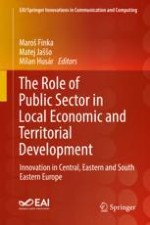The book covers the topic of the role of public sector in the economic and territorial development across several dimensions of spatial planning, e.g. theoretical-methodological (planning cultures, leadership), executive (regional policies, services of general interest), sectoral (energy, tourism, air-quality) or social (social innovation, preservation of cultural heritage). The book delivers up-to date knowledge build on interactions between representatives of different stakeholders of economic and territorial development with the research represented by renowned experts and academicians. This is mirrored in the content of the book, delivering in a consistent form the conceptual explanations combined with the examples of the role of the public sector in fostering the local economies within the frame of spatial planning. The book reflects and transfers the expert knowledge which has been generated during more than a decade of scientific and research activities of Spa-ce.net.
Presents a comprehensive view on different aspects of the involvement of public sector in the local and regional spatial development;
Includes a combination of macro-regionally specific perspectives with the generalized knowledge;
Provides knowledge from various researchers from prestigious European scientific and research teams.
